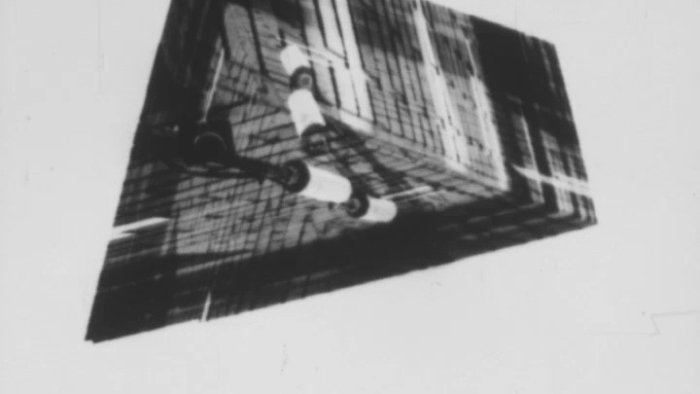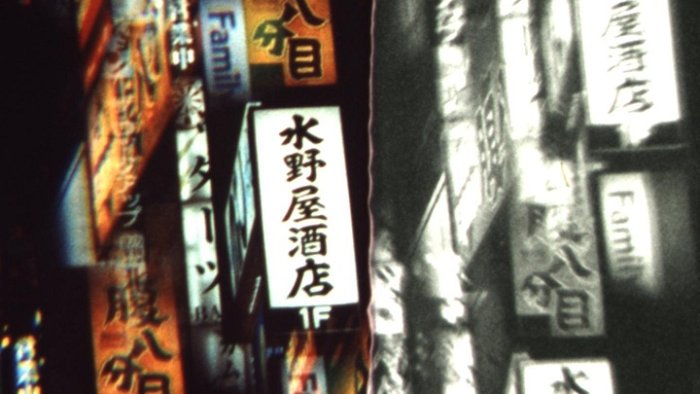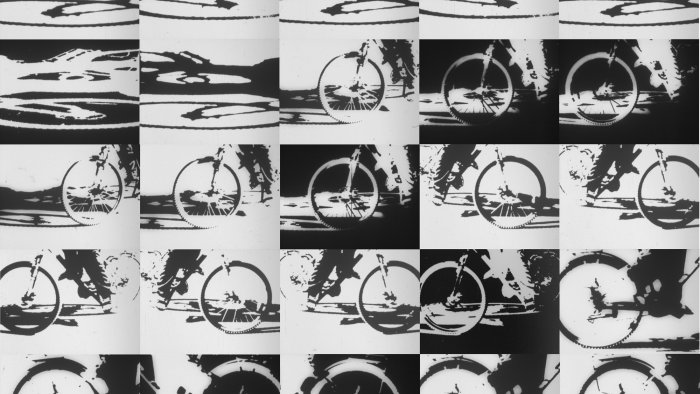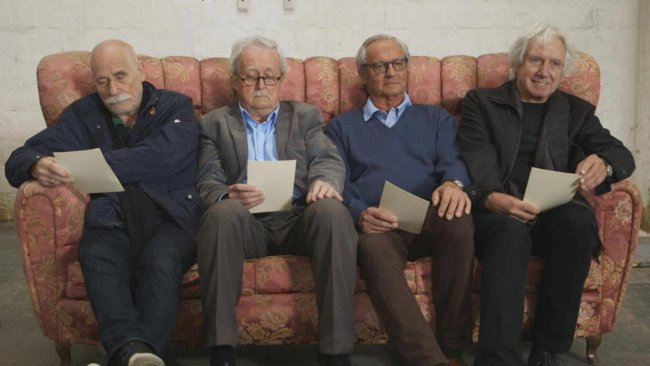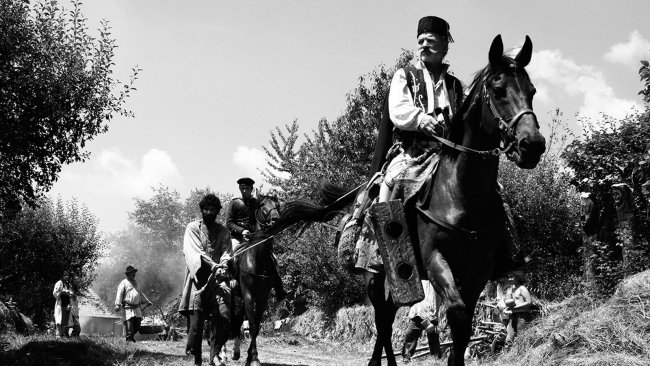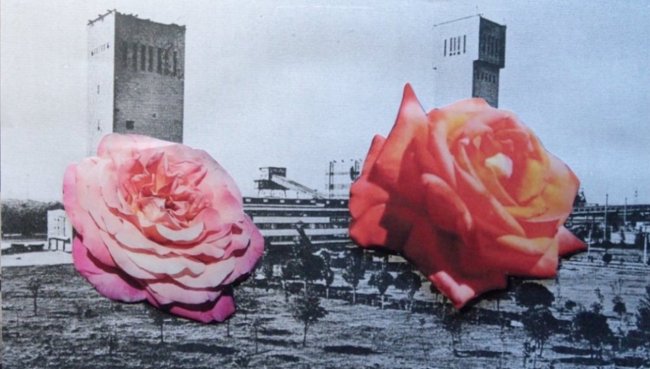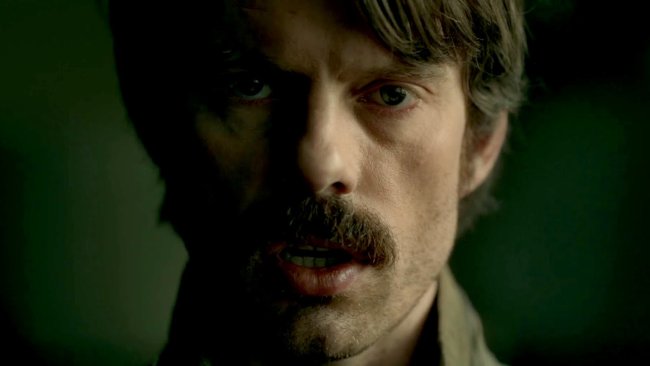Touhy & Barrie | 16mm Performance Projections
[…] On the screen we “see” the backstage of the film, and at the same time, in our seats, we “are” in the backstage of the film: the eye’s experience joins with the physical experience of the projective device. Tuohy & Barrie finally work with the geography of projection, giving new value to the architecture of cinema, an architecture reminiscent of Plato’s cave.
Text: Giuseppe Di Salvatore
16mm projection remains the fundamental analogue tool for a physical and experimental approach to film. The Australian duo Tuohy and Barrie consciously use this tool without nostalgia but with the pleasure of exploring the limits of perception and reflecting on the proper grammar of film. In Lost Train, they seem to capture the movement of films themselves in a crescendo of colours and superpositions, almost an homage to Man Ray. They work with patterns and variations, and in the nice theatre of Spoutnik Cinéma we have the impression of being at a jazz concert. In fact, the soundtrack plays a big role in their constructions, and provides a stimulating counterpoint with the editing of images. We experience this at a Chinese intersection (Crossing), where the stripes constitute a staff on which people and musical scales cross in a serial way. The stripes also appear as the main vocabulary of the other Chinese short, Ginza Strip, which investigates the potentialities of the kaleidoscope, immersing us in the magical world of the 19th century Phantasmagoriae, in which the principle of projection was first experimented in all its possibilities. Looking at these very material, low-definition images that play with abstraction, I cannot help but think of Clement Greenberg’s plea for bi-dimensionality considered as the anti-illusionist core of avant-gardist Modernism in painting. The filmic experience that Tuohy & Barrie deliver to us seems to propose a similar gesture: away from illusionism, and towards the very materiality of images and sounds. This amounts to a natural reflection on the medium itself, as Tuohy & Barrie’s experiments concentrate on the essence of movement. On the Invention of the Wheel is nothing but a complete, almost didactic, analysis of movement and its perceptive levels, where we constantly oscillate between illusion and awareness of perception and of the filmic apparatus itself. An anatomy of movement, a step backwards to the point of view of the photogram. In Dot Matrix, this analysis of movement is perfectly bound with the jazzy way of constructing images and sounds. With this complex work, Richard Tuohy and Dianna Barrie become two VJs, introducing the performative aspect: the 16mm projector is now fully present in Spoutnik theatre and we sense it as an extra layer of perception in addition to the on-screen experience. The performative projection, Inside the Machine, pushes this situation further still: three projectors are used, plus the interference of hands. On the screen we see the backstage of the film, and at the same time, in our seats, we are in the backstage of the film: the eye’s experience joins with the physical experience of the projective device. Tuohy & Barrie finally work with the geography of projection, giving new value to the architecture of cinema, an architecture reminiscent of Plato’s cave. We discover again that, at the bottom of experimentation on the material aspect of film, there is the very avant-gardist attitude of Modernism, which means nothing but the inversion of the roles of matter and hypnosis in film: where the classic film uses matter to produce a hypnotic effect leading to representation, the experimental film focuses on matter itself, generating a pleasant hypnotic effect towards the medium itself. Tonight, from Australia, we learn to enjoy the hypnotic power of filmic matter.
Info
16mm Performance Projections | Richard Tuohy & Dianna Barrie | Short Films | Cinéma Spoutnik Genève | 50 Jours pour la Photographie à Genève
First published: June 16, 2016
